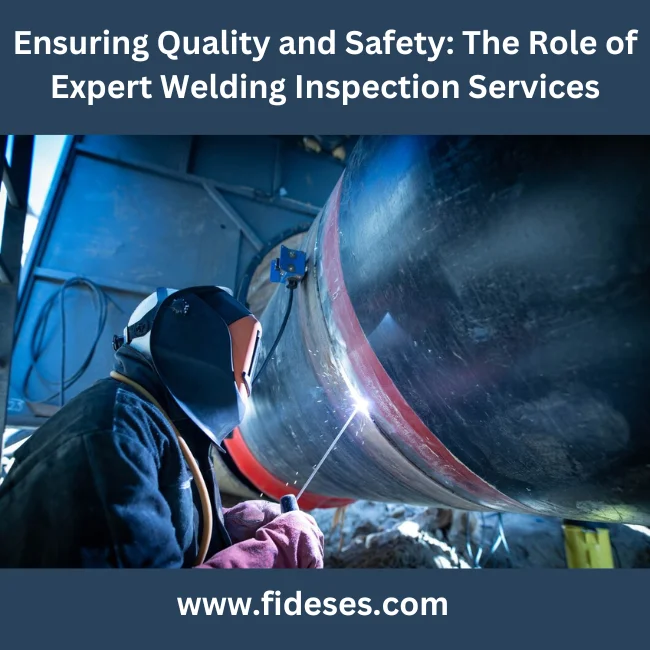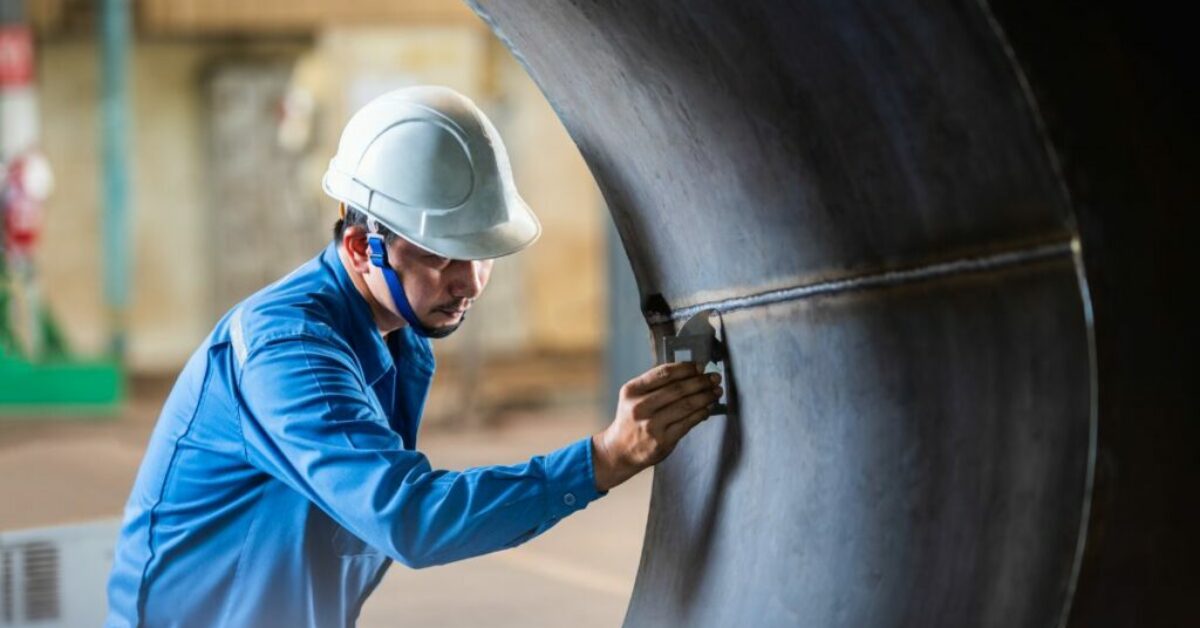Why Pick Specialist Welding Inspection Gilbert Arizona for Your Projects?
Why Pick Specialist Welding Inspection Gilbert Arizona for Your Projects?
Blog Article
A Comprehensive Overview to Welding Examination: Understanding Specifications, Techniques, and Finest Practices for Top Quality Guarantee

Welding inspection plays a critical function in making certain the structural integrity and safety of welded elements, requiring a detailed understanding of sector criteria such as those developed by AWS and ASME. Various inspection techniques, including ultrasonic and visual screening, are used to detect potential problems that could jeopardize top quality. Carrying out finest methods can considerably enhance operational integrity and foster depend on among clients. Welding Inspection Gilbert Arizona. As we discover these essential components, it ends up being apparent that the implications of welding examination prolong far past conformity, inviting a closer exam of exactly how these processes form market requirements and practices.
Relevance of Welding Assessment
Welding examination plays a vital role in making sure the honesty and safety and security of welded frameworks. It is an important procedure that validates that welds satisfy predefined requirements, which is vital in different sectors, including building, auto, and aerospace. By carrying out comprehensive inspections, possible problems such as splits, incomplete combination, and porosity can be recognized early, stopping devastating failings that could result in accidents or pricey fixings.
The significance of welding examination expands beyond mere conformity with laws; it likewise fosters trust with stakeholders. Customers and regulative bodies anticipate assurance that the structures they count on are developed to stand up to operational tensions. Efficient welding inspection practices contribute to lasting longevity and efficiency of the frameworks, eventually leading to decreased maintenance prices.
Additionally, welding evaluation promotes a society of high quality within organizations, encouraging adherence to ideal techniques and constant improvement. By integrating evaluation processes right into the welding process, companies can boost their online reputation and develop themselves as leaders in quality guarantee. Finally, the relevance of welding examination hinges on its ability to guard lives, make sure structural integrity, and maintain industry criteria, making it a crucial facet of welding procedures.
Key Sector Criteria
Ensuring conformity with key sector standards is crucial for keeping the top quality and safety of bonded structures. Numerous organizations develop these standards to promote ideal techniques in welding and assessment. Amongst the most identified are the American Welding Society (AWS) and the American Society of Mechanical Designers (ASME), which offer thorough guidelines and specs for welding processes and inspection requirements.
AWS criteria, such as AWS D1.1 for structural welding, rundown requirements for materials, style, and screening to ensure the integrity of welds. ASME codes, including ASME Section IX, govern the certification of welders and welding treatments, making certain consistent quality in industrial applications. Globally, the ISO 3834 typical emphasizes quality requirements for fusion welding, providing a framework for organizations to show compliance with global finest methods.
Compliance with these criteria not only enhances the integrity of welded structures yet also mitigates threats linked with structural failings. Additionally, adherence to industry requirements is usually a requirement for governing approvals and can substantially influence job specifications. Ultimately, understanding and implementing these vital criteria are important for effective welding assessment and quality assurance.
Examination Techniques Introduction
Efficient welding assessment depends on a range of methods developed to assess the top quality and stability of welds. These techniques can be generally classified into destructive and non-destructive screening (NDT) methods. Non-destructive screening methods, which are widely favored in the market, permit the examination of welds without jeopardizing the integrity of the material.
Amongst one of the most frequently used NDT strategies are visual examination, ultrasonic testing, radiographic testing, and magnetic fragment screening. Aesthetic inspection is usually the initial step in the examination procedure, allowing assessors to identify surface area blemishes and evaluate weld grain profiles. Ultrasonic screening uses high-frequency acoustic waves to spot inner flaws and determine the thickness of welds. Radiographic screening involves making use of X-ray or gamma-ray imaging to reveal interior issues, while magnetic particle testing works for discovering surface area and near-surface gaps in ferromagnetic materials.
Each strategy has its own advantages and restrictions, making it essential for examiners to pick the most proper approach based upon the certain needs of the task, the products involved, and the urgency of the welds being checked. This cautious choice guarantees comprehensive assessments and supports safety and top quality standards in welding operations.

Usual Issues and Their Effects
A thorough understanding of common defects in welds is essential for maintaining structural integrity and security in welded constructions. Welding problems can considerably jeopardize the mechanical homes of the joint, causing failures that could jeopardize both employees and devices.
Typical problems include porosity, which shows up as tiny gas pockets caught in the weld metal, weakening the total framework. Breaking is another widespread issue, frequently resulting from quick cooling or improper joint layout, causing tension focus that can lead to catastrophic failures. Insufficient combination occurs when the weld steel fails to effectively bond with the base product, creating powerlessness that may lead to splitting up under load.
Other notable flaws consist of undercutting, where the weld grain erodes the base metal, and slag incorporations, which can hinder the weld's stamina. Each of these defects has particular effects; for instance, porosity can lower ductility, while cracking directly influences tensile strength. Identifying and comprehending these issues during assessment is essential for guaranteeing and implementing corrective actions compliance with market criteria, ultimately protecting the structural stability of welded assemblies.
Ideal Practices for Quality Guarantee
Applying finest click here for info techniques for quality control in welding procedures is vital for achieving optimal results and reducing defects. One important practice is the facility of clear welding procedures that adhere to industry criteria and requirements. These procedures must consist of in-depth directions relating to material option, joint prep work, and welding strategies to make certain consistency and top quality.
Normal training and qualification of welding employees are additionally essential. Proficient welders that comprehend the importance of quality control are a lot more likely to generate sound welds. In addition, implementing a robust inspection program, consisting of both non-destructive and aesthetic screening (NDT), can assist determine flaws early in the process, permitting timely corrective actions.
Documents plays a key function in top quality guarantee. Maintaining my explanation precise records of welding repair services, inspections, and specifications ensures traceability and liability. Additionally, using sophisticated modern technologies such as automated welding makers can boost precision and lower the potential for human mistake - Welding Inspection Gilbert Arizona.
Finally, cultivating a culture of high quality within the company encourages workers to focus on quality in their work. By adhering to these ideal practices, organizations can improve the honesty of their welding procedures, ultimately resulting in boosted item quality and decreased expenses linked with rework and repairs.

Final Thought
In verdict, welding examination plays an essential duty in making certain the honesty and safety and security of bonded frameworks. By executing finest practices, organizations can boost reliability, minimize upkeep prices, and grow count on among customers, inevitably adding to successful welding operations.
In addition, welding assessment promotes a culture of top quality within companies, motivating adherence to best practices and continual enhancement. In conclusion, the significance of welding inspection exists in its capability to safeguard lives, make certain structural reliability, and promote market standards, making it an essential facet of welding procedures.
Amongst the most recognized are the American Welding Culture (AWS) and the American Culture of Mechanical Engineers (ASME), which give in-depth standards and specs for welding procedures web and evaluation standards.
Ultimately, understanding and applying these key criteria are essential for efficient welding inspection and high quality guarantee.
Effective welding assessment counts on a variety of methods made to assess the high quality and honesty of welds. - Welding Inspection Gilbert Arizona
Report this page